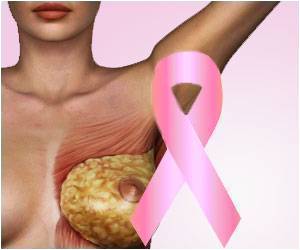
H. Gilbert Welch, M.D., M.P.H., and Brittney A. Frankel, both of Dartmouth Institute for Health Policy and Clinical Practice, Hanover, N.H., developed a method to estimate the probability that a woman with screen-detected breast cancer had her life saved because of the screening. The authors used DevCan, the National Cancer Institute''s software for analyzing data, to estimate the 10-year risk of diagnosis and the 20-year risk of death. This probability approach also relies on two estimated possibilities for a woman in the general population of the United States: the probability of having breast cancer detected by screening and the probability of avoiding breast cancer mortality (death) because of the screening.
The authors estimated that for a 50-year old woman, the risk of developing breast cancer in the next 10 years is 2,990 per 100,000. In this age group, 64 percent of breast cancers are found by mammography, suggesting that the risk of having a screen-detected breast cancer during the same period is 1,910 per 100,000. The woman''s observed 20-year probability of breast cancer death is 990 per 100,000. Assuming that screening mammography has already reduced risk of breast cancer death by 20 percent, the risk of death in the absence of screening would be 1,240 per 100,000, suggesting that the estimated benefit of screening amounted to 250 per 100,000. Therefore, the authors estimate that the probability that a woman with screen-detected breast cancer avoids breast cancer death because of mammography is 13 percent (250/1910).
The probability of the same 50-year-old woman avoiding breast cancer death increases to 17 percent if screening mammography reduces breast cancer mortality by 25 percent; however, probability decreases to 3 percent if screening mammography reduces breast cancer mortality by 5 percent. Similar analyses conducted for women of varying ages all yield probability estimates below 25 percent.
"We considered a range of values: namely, that screening mammography reduces breast cancer mortality anywhere from 5 percent to 25 percent. The values toward the high end (20 to 25 percent) reflect the randomized trial data from more than a quarter century ago," the authors conclude. "Consequently, we believe that readers should focus on the values toward the low end (5 to 10 percent) and recognize that the probability that a woman with screen-detected breast cancer has, in fact, avoided a breast cancer death because of screening mammography is now likely to be well below 10 percent."
Advertisement














